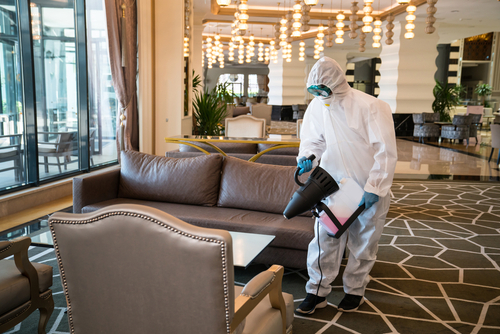
How Can Disinfection Service Boost Hotel Bookings?
August 1, 2023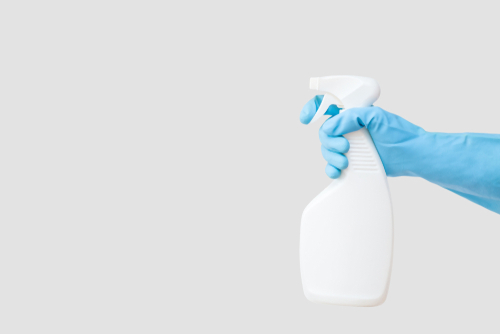
Disinfection Dos and Don’ts to Ensure Effective Cleaning
August 16, 2023Disinfection of Soft Surfaces: Upholstery, Carpets, and More

Disinfection of Soft Surfaces Upholstery, Carpets, and More
Disinfection of Soft Surfaces: Upholstery, Carpets, and More. While disinfecting hard surfaces is common practice, often overlooked are the soft surfaces that make up our homes and workplaces.
Upholstery, carpets, and other soft materials can harbor germs, bacteria, and allergens, posing potential risks to our health.
Soft surfaces, such as upholstery and carpets, are ideal for germs, bacteria, and allergens to thrive. These materials absorb moisture, trap dirt, and offer a comfortable breeding ground for pathogens.
Regular cleaning is not enough to eliminate these microscopic threats. Disinfection of soft surfaces is essential to create a clean and healthy living space.
This article delves into the importance of disinfecting soft surfaces and provides comprehensive guidance on effective methods. Read on – Disinfection of Soft Surfaces: Upholstery, Carpets, and More
Understanding Soft Surface Contaminants
Soft surfaces accumulate various contaminants, including dust, pollen, pet dander, and microorganisms.
Bacteria and viruses can survive on these surfaces for extended periods, contributing to the potential spread of infections.
Understanding the types of contaminants that soft surfaces harbor underscores the need for effective disinfection.
Pathogens thrive on soft surfaces due to their porous nature, which provides ample hiding spots and nutrients for growth.
Moisture from spills, pet accidents, or humidity further facilitates the survival and reproduction of microorganisms. Without proper disinfection, these pathogens can become a persistent source of health risks.
Choosing the Right Disinfection Methods
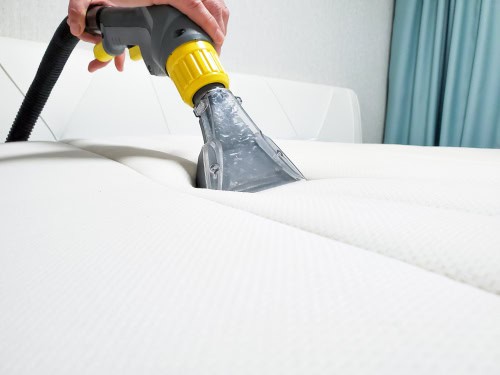
Considerations for Soft Surface Materials
Various upholstery fabrics require different disinfection approaches. Delicate fabrics may be sensitive to certain disinfectants, while more durable materials can withstand a broader range of treatments.
Understanding the characteristics of upholstery fabrics helps in selecting appropriate disinfection methods.
Carpets come in various materials, including wool, synthetic fibers, and blends.
Choosing disinfectants compatible with the specific carpet material is crucial to ensure effective disinfection without causing damage or discoloration.
Effective Disinfection Agents
Chemical disinfectants formulated for soft surfaces are designed to neutralize pathogens while effectively being gentle on the material. Look for disinfectants with proven efficacy against a wide spectrum of microorganisms.
Natural disinfectants such as vinegar, hydrogen peroxide, and essential oils can be effective alternatives for those seeking environmentally friendly options.
These natural solutions offer disinfection properties without harsh chemicals.
Preparing for Disinfection
Effective disinfection begins with thorough pre-cleaning. Removing loose dirt, debris, and surface contaminants ensures that the disinfectant can directly contact pathogens, maximizing its effectiveness.
Dirt and debris on soft surfaces can create a barrier that prevents disinfectants from reaching pathogens. Pre-cleaning also helps prevent the formation of biofilms, which can shield microorganisms from disinfection.
DIY Disinfection Techniques
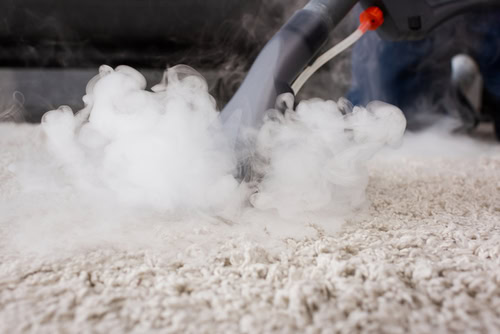
Steam Cleaning
Steam cleaning is a powerful method for disinfecting and refreshing soft surfaces. High-temperature steam kills pathogens and loosens dirt and grime, making removing them easier.
A step-by-step guide to steam cleaning upholstery and carpets:
- Vacuum the surface to remove loose dirt.
- Fill the steam cleaner with water and follow the manufacturer’s instructions.
- Move the steam cleaner over the surface, allowing steam to penetrate for effective disinfection.
- Use a clean cloth to wipe away moisture and dislodged dirt.
Vinegar Solutions
Vinegar, known for its natural disinfecting properties, can be diluted with water to create an effective disinfectant. Mix equal parts vinegar and water in a spray bottle for convenient application.
Test the vinegar solution on an inconspicuous area of the soft surface to ensure compatibility. Avoid over-saturating the material, as excessive moisture can cause damage.
Baking Soda Deodorizing
Baking soda is a versatile cleaning agent that also has disinfectant properties. It can effectively neutralize odors and help eliminate certain pathogens.
Application methods and precautions for using baking soda:
- Sprinkle a thin layer of baking soda over the surface.
- Allow the baking soda to sit for a few hours to absorb odors and moisture.
- Vacuum the baking soda using an upholstery attachment or a vacuum cleaner.
Professional Disinfection Services
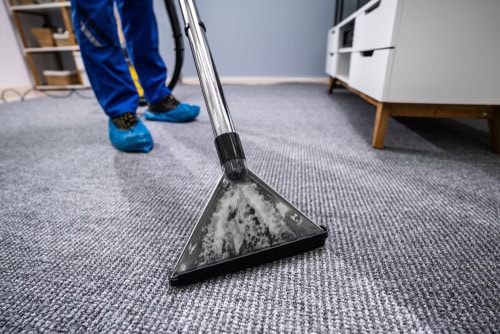
Benefits of Professional Services
Professional disinfection services utilize advanced equipment and techniques to ensure deep penetration and thorough disinfection of soft surfaces. This approach reaches areas that DIY methods may miss.
Regular professional disinfection keeps soft surfaces germ-free and extends their lifespan by preventing the accumulation of dirt and contaminants that can degrade the material.
Choosing a Disinfection Service
When choosing a professional disinfection service, consider the company’s reputation, experience, certifications, and customer reviews.
A reputable service provider will offer transparent information and tailor their methods to your needs.
Reading reviews from previous customers provides insights into the quality of service a disinfection provider offers.
Additionally, verify the company’s credentials and certifications to ensure they adhere to industry standards.
Maintaining Disinfected Soft Surfaces
Maintaining disinfected soft surfaces requires regular cleaning routines. Vacuuming, spot cleaning, and occasional steam cleaning or natural disinfection treatments help prevent the buildup of contaminants.
Implement preventive measures such as placing doormats at entryways, using furniture covers, and minimizing food and drink consumption on soft surfaces. These measures help reduce the introduction of contaminants.
Frequently Asked Questions (FAQs)
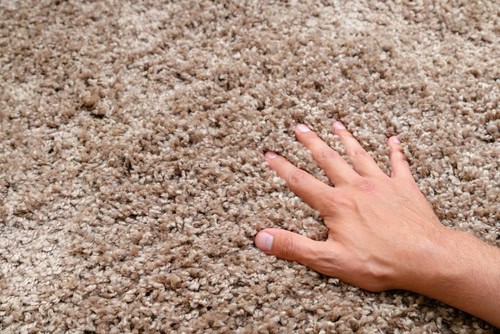
Can I use the same disinfectant on all types of upholstery?
Different upholstery fabrics have varying sensitivities to disinfectants. Choosing a disinfectant compatible with the specific fabric is essential to prevent damage or discoloration.
How often should I disinfect my soft surfaces?
The frequency of disinfection depends on factors such as usage, foot traffic, and exposure to contaminants. High-traffic areas may require frequent disinfection, while less-used spaces can be disinfected less often.
Are natural disinfectants as effective as chemical ones?
Natural disinfectants can be effective against various pathogens, but their efficacy may vary. Chemical disinfectants are rigorously tested and formulated for specific pathogens, making them highly effective.
What’s the difference between cleaning and disinfecting?
Cleaning removes visible dirt and debris, while disinfecting kills or inactivates pathogens. Both processes are essential for maintaining a clean and healthy environment.
Can I steam-clean delicate fabrics without causing damage?
Steam cleaning can be used on delicate fabrics if done correctly. Use the appropriate steam cleaner settings and follow manufacturer guidelines to avoid damage.
Is vacuuming enough to keep my carpets germ-free?
Vacuuming removes loose dirt and debris but may not effectively eliminate all germs. Disinfection methods like steam cleaning or natural solutions are necessary for thorough germ removal.
Are there any health risks associated with chemical disinfectants?
Some chemical disinfectants can release fumes that may be harmful if inhaled in excessive amounts. Proper ventilation and adherence to manufacturer instructions minimize risks.
Should I be concerned about mold growth after disinfection?
Mold growth can occur if soft surfaces remain damp for an extended period. Ensure proper drying after disinfection to prevent mold formation.
Disinfection of Soft Surfaces: Upholstery, Carpets, and More – Conclusion
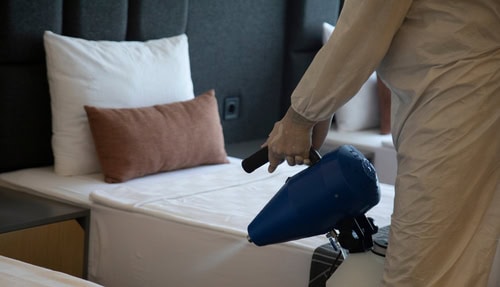
The disinfection of soft surfaces is integral to maintaining a clean and healthy living environment.
Individuals can create spaces that promote well-being by understanding the types of contaminants that thrive on upholstery and carpets and choosing appropriate disinfection methods.
By implementing the dos and don’ts of disinfection and incorporating effective methods for soft surfaces, readers can take proactive steps toward ensuring the cleanliness and safety of their living spaces.
Regular cleaning, DIY disinfection, and professional services each play a vital role in minimizing the risks associated with pathogens and allergens on soft surfaces.
Ultimately, a well-disinfected environment contributes to improved health and quality of life. Contact us today for your professional and reliable disinfection services!




